
Exhibits

Current Exhibit
Bill Stevens: From Rodeo Cowboy to Cowboy Artist
This month, the museum celebrates this Bandera legend with a retrospective that features an extensive display of his paintings and bronzes. Bill Stevens: Rodeo Cowboy to Cowboy Artist opens Thursday, February 27th from 5:00 to 7:30 pm. The museum is calling the event, An Evening with Bill Stevens because that is just what it will be. If you have ever spent time with Bill, you would know his talent for storytelling matches his artistic talent. Stevens will hold court that evening and is prepared to regal guests with stories from his fascinating life.
His story begins with his parents’ divorce. He left Texas with his mother to live with her parents in New York City, though his Texas roots never left him. Every year, Bill attended the rodeo at Madison Square Gardens and spent time at his grandfather’s weekend home where he rode horses and bought a roping calf to train himself in the art of rodeo. He indulged his other love of art by skipping class to draw at the Metropolitan Museum of Art.
While attending Texas A&M, Bill competed on the collegiate rodeo team and developed his bull riding skills. While in graduate school, he received his first pro rodeo card and today he holds a gold lifetime card in the Professional Rodeo Cowboys Association. He continued to participate in rodeos, juggling his rodeo events with his day jobs in the corporate world. He recalls one time when he competed in the Cow Palace in San Francisco, he had to board an airplane still in his rodeo clothes, spurs, and his number on his back to make it back to New Jersey for a morning business meeting. After the meeting, he returned to the hotel to find a Halloween party in the hotel bar. He went back to his room to put on his rodeo clothes and join the festivities. After a series of injuries, he decided to stop bull riding because he didn’t want to show up at his job all busted up. He later picked up tied-down calf roping as his event of choice.
When his employer, Hoffman La Roche Pharmaceuticals, gave him a choice of where he wanted to live, he chose Bandera. A former rodeo colleague recommended Bandera and told him Ray Wharton lived here. Bill introduced himself to Ray and immersed himself in the local rodeo scene. When he was faced with having to move again for his job, he thought his happiness was more important than money, so he decided to quit and stay in Bandera. To make a living, he went back to his love of drawing. He started Stevens Educational Consulting Services to teach children how to tell stories through drawing, or cartoon strips. From there, he developed his artistic talents. As a well-respected western artist, his sculptures and paintings have been exhibited in numerous art shows and galleries including the Alamo Kiwanis Western Show in San Antonio, Mountain Oysters show in Tucson, Arizona, and the Western Heritage Classic Art Show in Abilene, Texas. Bandera can boast of three of his largest paintings in the murals that he has done that are on display on buildings throughout town.
Bill has lots more stories to tell including his close friendship with some Hollywood heavyweights. Guests are invited to come to the exhibit opening to view his art and to enjoy an evening of storytelling. The event is free and open to the public. The Frontier Times Museum is located at 510 13th Street in Bandera, Texas. For more information, please call 830-796-3864. Having lived a most extraordinary life, Bill can say, “I have a tough time saying no, but it’s led me on a lot adventures. Having fun in life is what is important.”

Curiosities
Museum founder, J. Marvin Hunter, Sr. often said that he did not collect items, they collected him. Museum guests are transported back in time when they walk through the galleries Mr. Hunter created with treasures from around the world. Explore cases that may contain Easter Eggs decorated in 1936 sitting next to a 2,000-year-old corn cob found in a West Texas rock shelter. Other treasures include a birthing chair from the Middle Ages used in an Italian palace, the first piano brought to Bandera from Paris, France by way of New Orleans, and a rather large and unexplained collection of jarred oil samples - Texas gold. Nature’s oddities abound as one finds the mascot of small Texas museums – the two-faced goat - next to the mummified remains of a squirrel found in an attic and lovingly placed in a glass box by the homeowner. The list goes on.
On your visit take a close look at the building itself, as the walls contain a collection of fossils, petrified wood, and arrowheads. One fireplace was set with a rifle and bullet mold and the other was set with the millstone from a nearby Mormon colony that settled along the Medina River in the 1850s.
Stalls of Fame:
Bandera’s Hometown Rodeo Stars
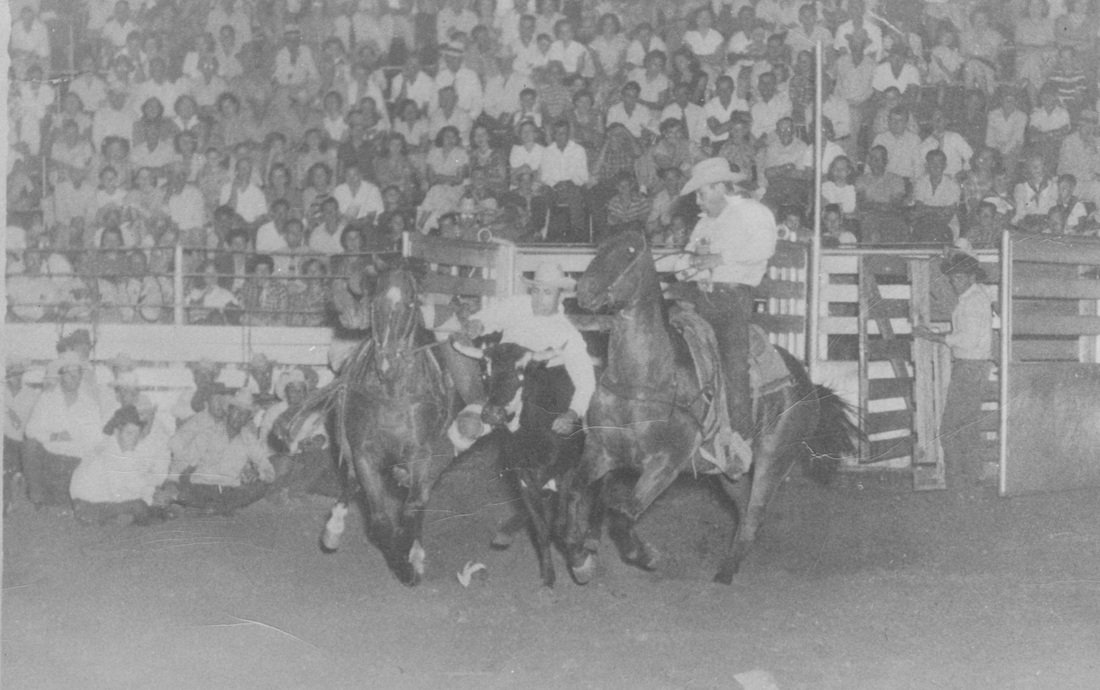
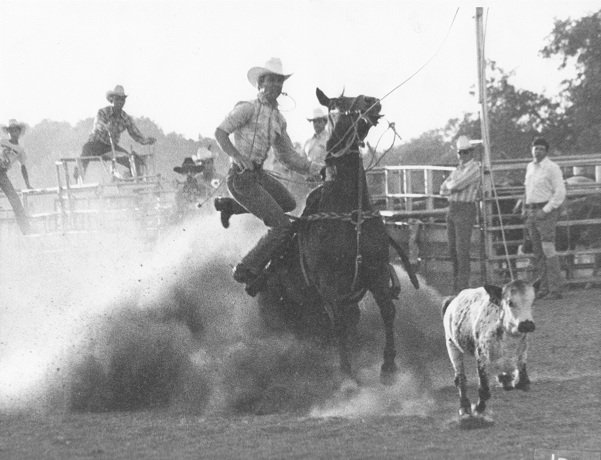
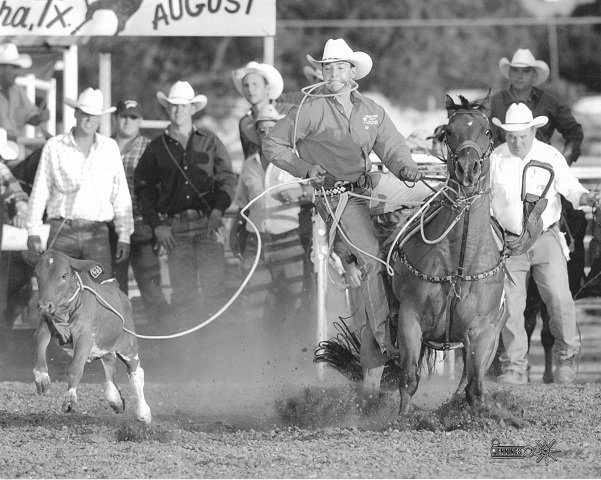

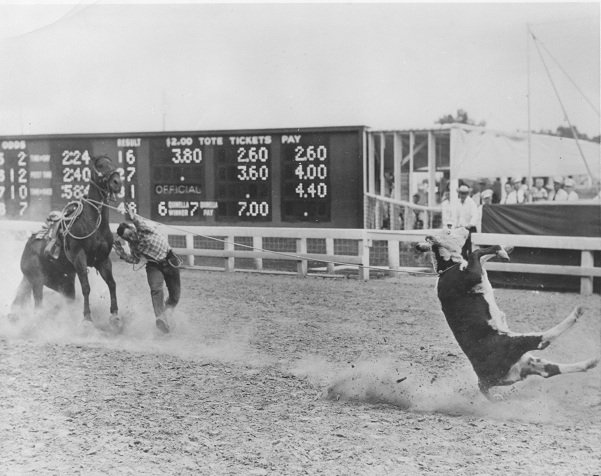
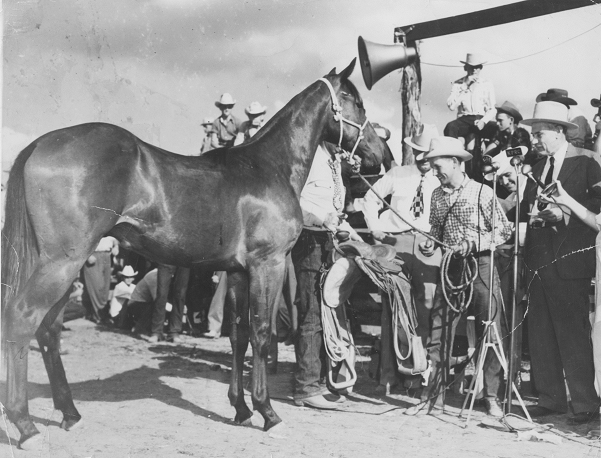
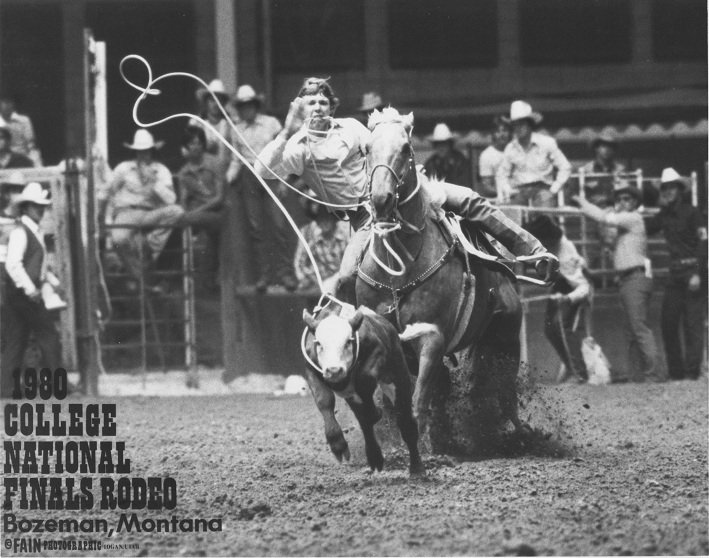
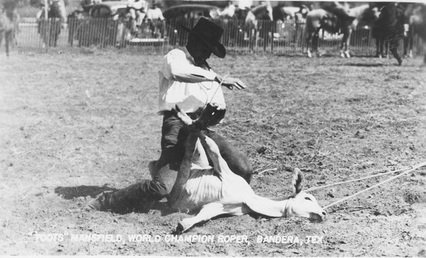
Stalls of Fame:
Bandera’s Hometown Rodeo Stars

Doane Western Art Gallery
The Doane Western Art Gallery houses a selection of the museum’s western art collection. The vast majority of the paintings were done by former museum owner, F. B. Doane. A passionate collector of western art and artifacts, Mr. Doane also expressed his love for the Old West through his art. The paintings of Mr. Doane are displayed along with the more contemporary artwork of his daughter, San Antonio artist, Peggy Calvert. The museum's collection also includes works by Texas artist, Warren Hunter, son of J. Marvin Hunter Sr. The paintings are hung against the museum’s natural rock wall which provides a unique gallery setting that reflects the landscape of the Texas Hill Country.
Bandera Cowboys, Oil on Canvas, ca. 1930s, by Warren Hunter
Medina Lake
100 Years
To help celebrate the centennial anniversary of Medina Lake, the museum has created a traveling exhibit that explores the lake’s colorful history. Beginning with Life Before the Lake, the exhibit explores the region of Medina River that provided sustenance and shelter for the early American Indians that camped along the river and the importance of the river to the cattle drives that brought cattle from South Texas to cattle trails leading to north. With the construction of the Medina Dam to create a lake for irrigation purposes, the newly formed lake displaced ranchers who had to adapt to the loss of their land. Many ranching families opened new lakeside businesses that catered to the tourists who flocked to the lake. The exhibit also explores how the lake impacted the farms to the south and the creation of new farming communities in the Medina River Valley.
This exhibit is composed of seven stand-up banners (3’ x 7’) and is available for loan. Please call 830-796-3864 for more information.













